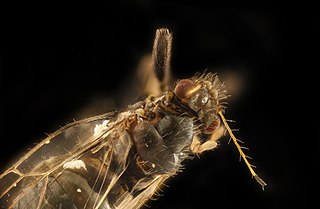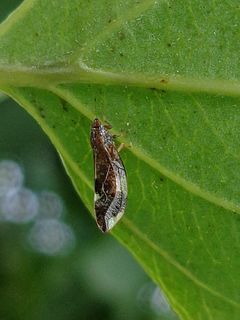 W
WBaeoalitriozus diospyri or Persimmon Psyllid is a species of Baeoalitriozus found in the United States and Mexico The psillids feed on Japanese persimmon as well as ornamental and native persimmons.
 W
WTriozidae is one of seven families collectively referred to as jumping plant lice. They have traditionally been considered part of a single family, Psyllidae, but recent classifications divide the group into a total of seven families; most of the genera remain in the Psyllidae, but Triozidae is the second-largest family in the group, containing 27 genera, and a number of pest species.
 W
WBactericera is a psyllid bug genus in the family Triozidae.
 W
WBactericera albiventris is a hemipteran bug in the family Triozidae, which causes galls on the leaves of willows. It was first described by Arnold Förster in 1848.
 W
WBactericera cockerelli, also known as the potato psyllid, is a species of psyllid native to southern North America. Its range extends from Central America north to the American Pacific Northwest and parts of Manitoba. It is restricted to the western part of the continent. As its name suggests, it is commonly found on potato and tomato crops, but has a species range that encompasses over 40 species of solanaceous plants and as many as 20 genera. Breeding hosts are generally recognised as being restricted primarily to Solanaceae, including important crop and common weed species, and a few species of Convolvulaceae, including bindweed and sweet potato. On some plants, especially potato, feeding of the nymphs causes a condition called psyllid yellows, presumed to be the result of a toxin. Both nymphs and adults can transmit the bacterium Candidatus Liberibacter.
 W
WTrichochermes is a genus of true bugs belonging to the family Triozidae.
 W
WTrioza is a genus of sap-sucking bugs in the family Triozidae.
 W
WTrioza alacris is a sap-sucking hemipteran bug in the family Triozidae which creates galls on the leaves of Laurus species. It is found in Europe.
 W
WTrioza centranthi is a sap-sucking hemipteran bug in the family Triozidae which creates galls on the leaves and flowers of Centranthus and Valerianella species. It was first described by Jean Nicolas Vallot, a French entomologist in 1829 and is found in Europe.